Students, women, farmers and Dalit groups gathered together on October 2nd, Gandhi Jayanti, to demand the withdrawal of a government order restricting protests to the confines of Freedom Park. The protestors intended to march from Gandhi Park at Maurya Circle to Vidhan Soudha but were detained by the police.
In 2022, the BJP-led Karnataka government passed an order barring protests anywhere in Bengaluru, except Freedom Park. Since its enforcement, the order has been used to arrest a wide range of protesting groups, including Citizens for Sankey, a group that opposed the proposed widening of Sankey Road, farmers from Devanahalli and Yelahanka opposing forced land acquisition and eviction, and Karnataka Rakshana Vedike protesting the possible merger of Amul with Nandini.
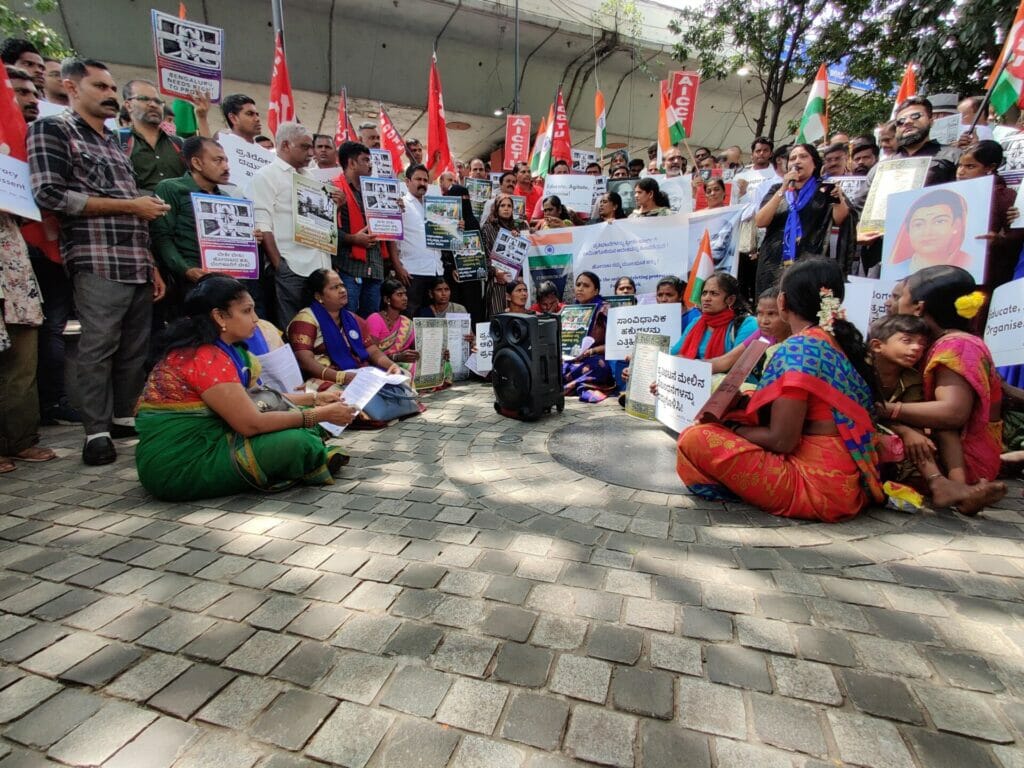
Read more: The right to protest: Criminalising democracy’s fundamental right despite constitutional guarantees
While the police have withdrawn FIRs against some groups like Citizens for Sankey, after pressure from the civil society groups, others like farmer groups continue to face legal battles against them.
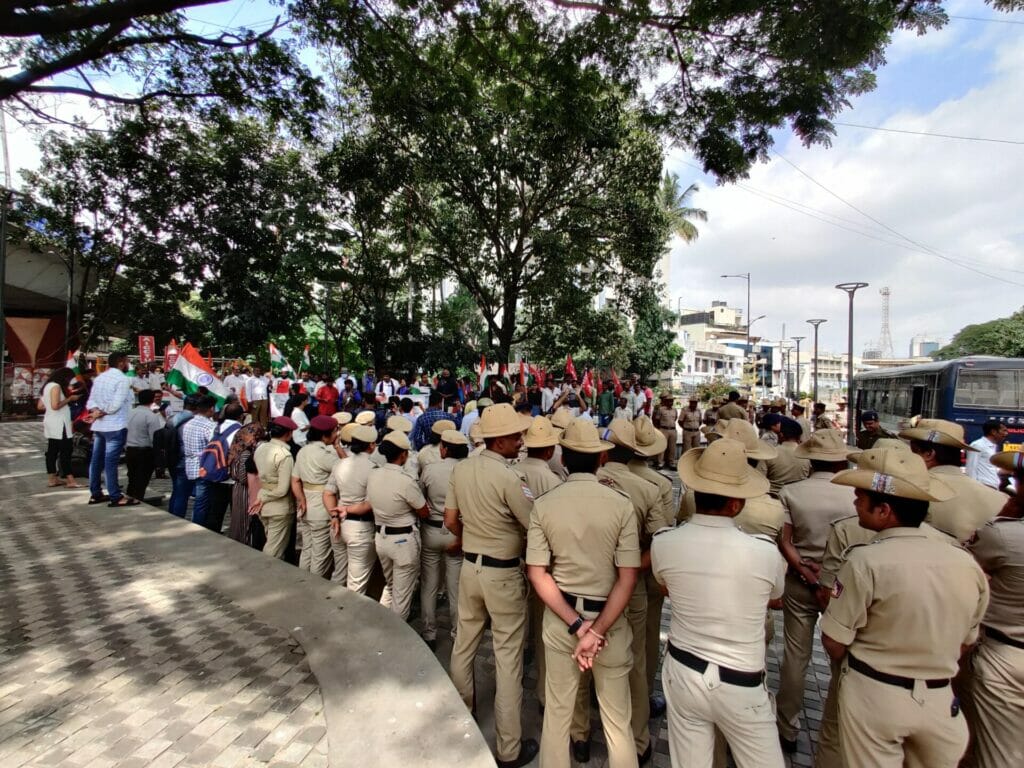
In June this year, multiple groups came together under a coalition called Horatada Hakkigaagi Janandolana, which translates to People’s movement for the Right to Protest. The coalition urged the new Congress-led government to withdraw the order and cases filed against protestors by the previous government. The coalition contends that restricting protests to the tiny Freedom Park is undemocratic and hinders constitutional guarantees of free speech.
On October 2nd, the protest was to involve a march from Gandhi statue to Ambedkar Statue at the Vidhan Soudha. Groups participating included the All-India Trade Union Congress (AITUC), Dalit Sangharsha Samiti (DSS), Slum Mahila Sanghatane, All India Lawyers Association For Justice (AILAJ). Youth and student groups such as the All-India Students Association. The Collective and Fridays for Future were also present at the protest.
Why protest anywhere?
But why is it important to be able to protest anywhere in the city?
Avni, a protestor and member of AILAJ, explains that protests are a means to draw the public and government’s attention to illegal, unjust or unconstitutional practices of the powerful. “It’s a way to raise our voice. If that voice is confined to a tiny area, there is no value to your protest,” she points out.
C Chandramma, convenor of the Savitribai Phule Mahila Sanghatane, noted in a speech that Bengaluru was a huge city and protests sometimes had an impact only if they were local and place based. “Already poor people cannot always come all the way to Freedom Park to demand justice,” she said.
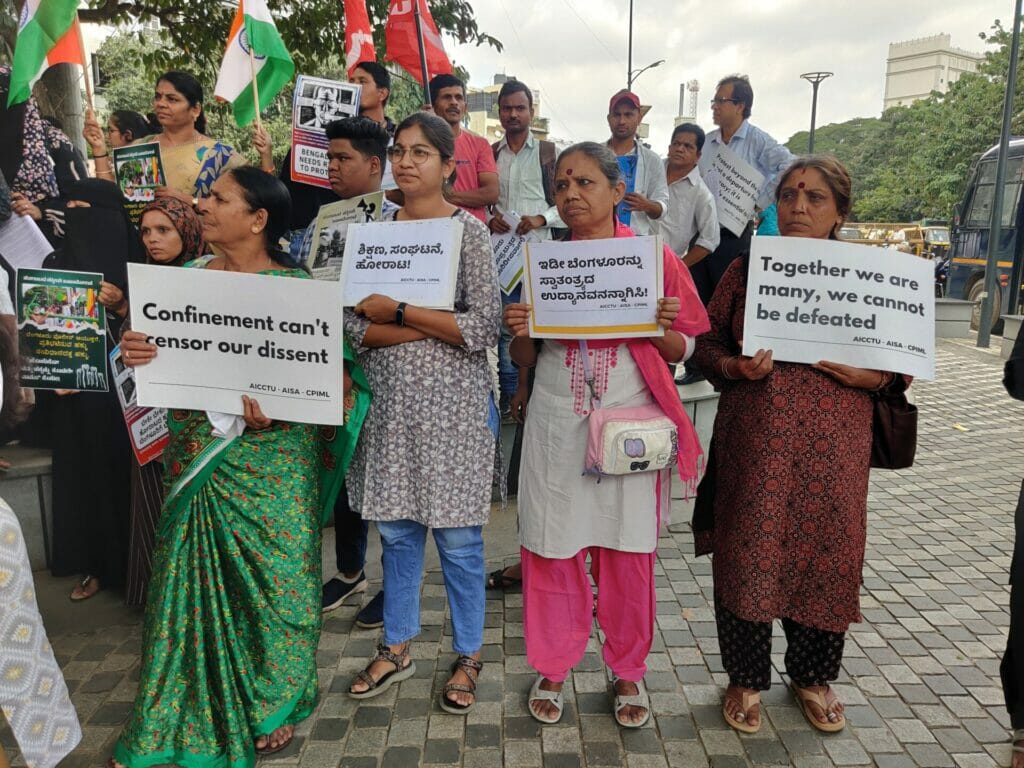
S Babu, President of the Street Vendor’s Association, asks why protests should be held only in Freedom Park. He notes that street vendors operate across the city and the protests are often to ask for their fundamental right to earn a livelihood. For instance, when street vendors were suddenly evicted from the Jayanagar 4th block complex, they protested outside the BBMP South Zone office to demand their rights. “Why should they come to Freedom Park for this issue?” asks Babu.
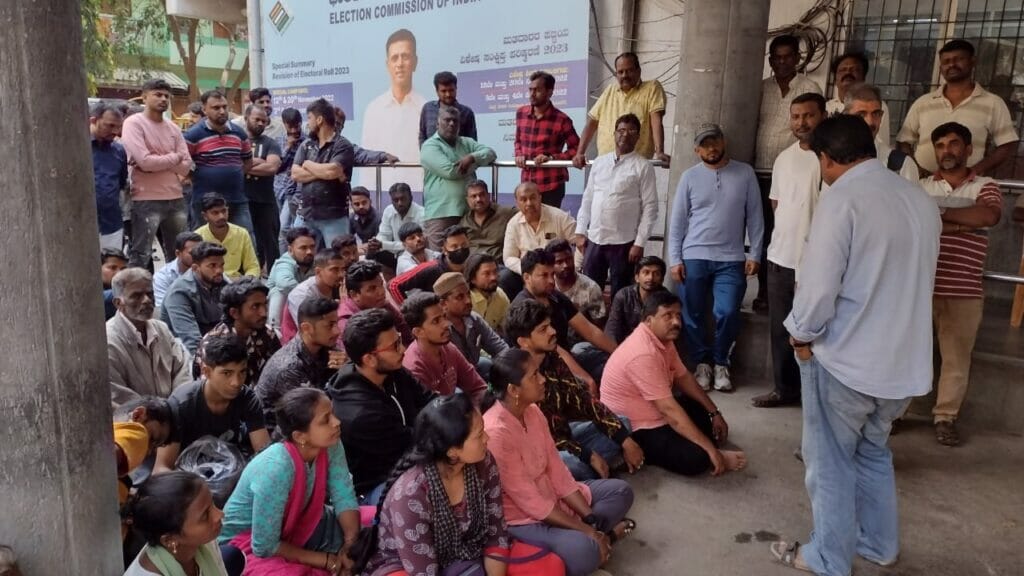
RTI activist Nageshwar Rao cited the example of the pourakarmikas union protesting at the BBMP office for better working conditions. He also noted that it would not have been effective at Freedom Park in an interview to a television channel at the protest.
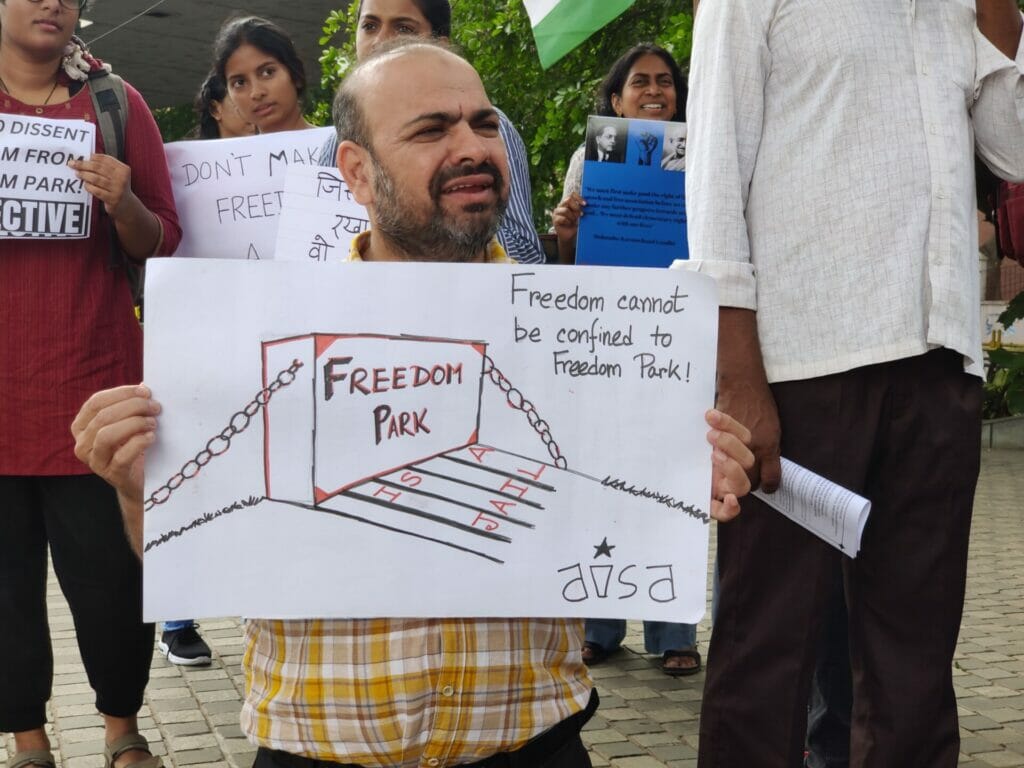
Climate activist Disha Ravi, who was also part of the protest, notes that when Fridays for Future started in 2019 the group would protest everywhere. “We held regular protests every Friday, especially at major places like MG Road and monthly at Town Hall. We used to sometimes have five simultaneous protests across the city on Fridays.” The Freedom Park order brought the protests to an end, according to Disha. The order, she says, forces people with concerns to be hidden away in a corner of the city.
Read more: Over 2500 citizens come together to protest against elevated corridor
“Protests are meant to cause discomfort to public. It is meant to grab the attention of the people and let them know what the issue is. It is a way to make sure the government is held accountable. You can’t do that in some park.”
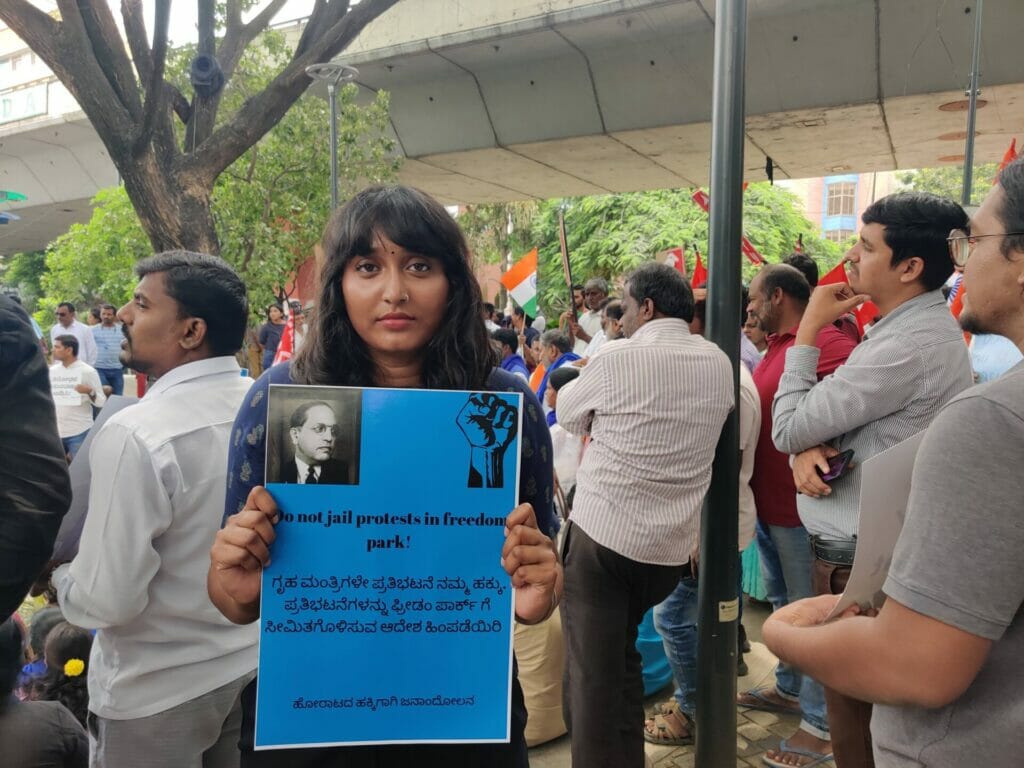
Police clampdown on protestors
Ironically, the police clamped down on the protestors as soon as they attempted to start marching to Vidhan Soudha from the Maurya Circle. Leaders of several groups, including Mavalli Shankar, state convenor for DSS, Clifton D’Rozario, national secretary for AICCTU and Maitreyi K, convenor of the AILAJ were detained. According to a statement by Horatada Hakkigaagi Janandolana, the police also roughed up students and detained them.
Vinay Sreenivasa, member of the coalition, said the protesters were detained for over three hours and several students were roughed up.
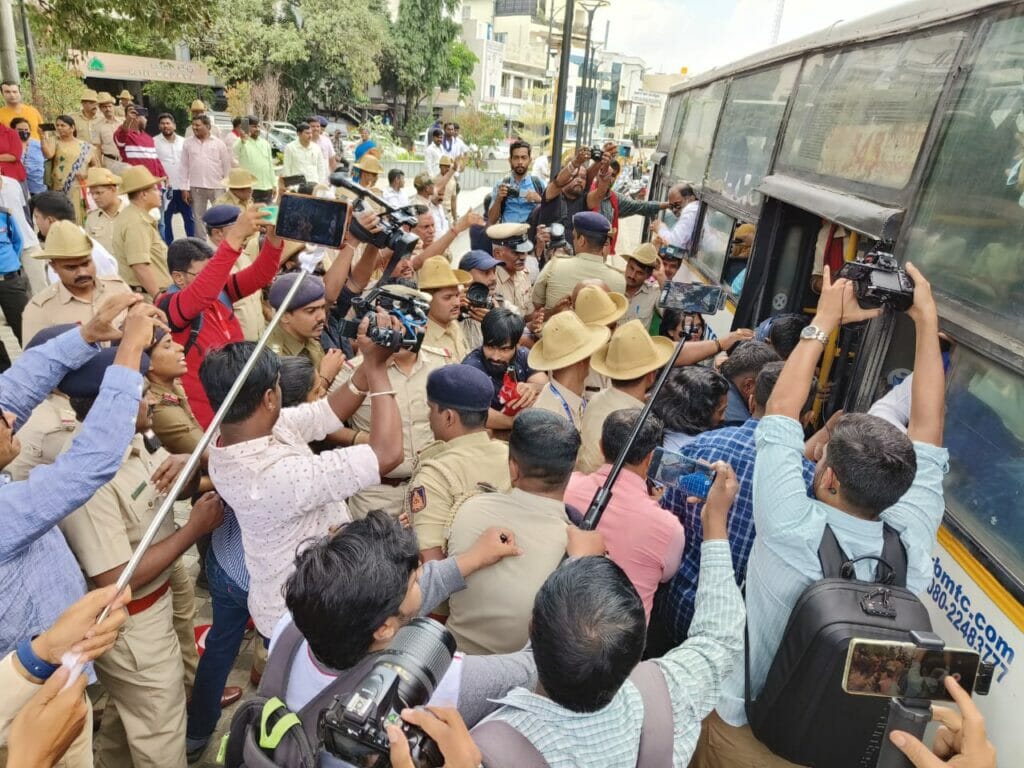
In the statement, the coalition has, however, claimed they would continue to fight until their demands were met. “Our fight is a fight for democracy, for ensuring that people of Karnataka have the right to voice their demand. At a time when the constitution is under threat, it is of even more importance that the people have the right to dissent.”
Tell us your views
- Do you have any suggestions or thoughts on how to accommodate peaceful protests across the city without causing public disruption? Do comment below, or write to bengaluru@citizenmatters.in.
- You can also tell us about your past experience participating in a citizen protest anywhere in the city.
- Do you also feel strongly about the right to protest anywhere in the city? You can raise your voice by contacting Vinay Sreenivasa: +919880595032 or Maitreyi Krishnan: +91 9243190014.